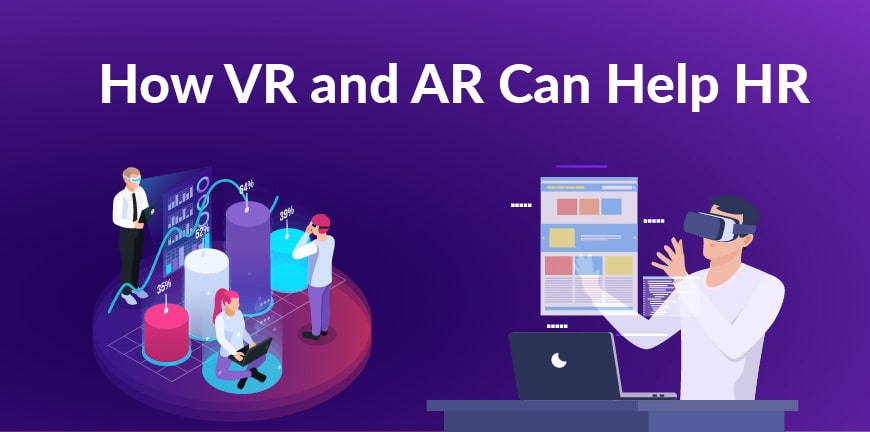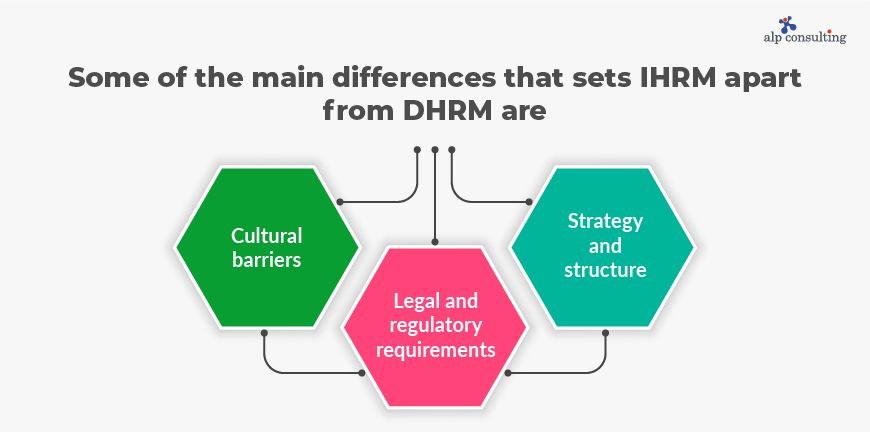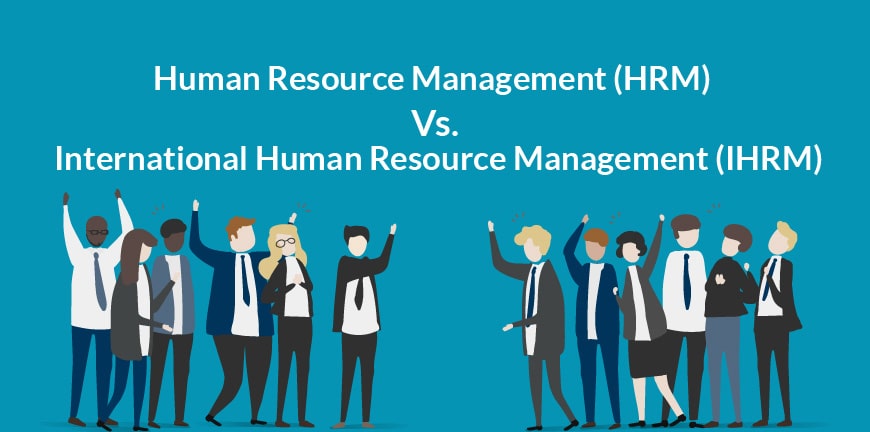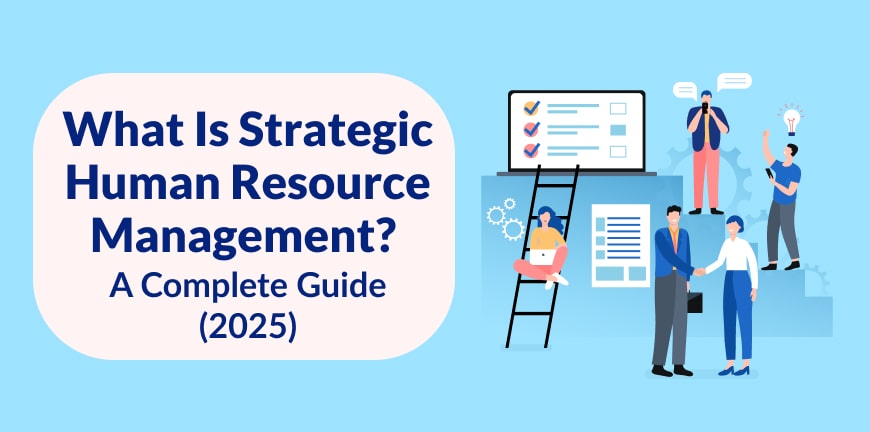
Driving the Future: Key Automotive Industry Trends for 2024
29/11/2023
35 Ways VR and AR Can Help HR Improve Candidate and Employee Experience
12/12/2023HRM (Human Resource Management) is an integral part of every organization. Whether you are a company operating domestically or internationally, efficient HRM is crucial to remain competitive in today’s economy. Of course, there are many similarities between domestic and international HRM, but there are also some especially important distinctive differences between HRM and IHRM that companies should be aware of.
Some of the questions you will have the answers to by the end of this article are-
- What is Domestic HRM and International HRM?
- Domestic vs International HRM
- Similarities between DHRM AND IHRM
- Differences between IHRM and DHRM
- Which is better? DHRM or IHRM
HRM (Human Resource Management)
HRM is a function of management that encompasses recruitment, management, and employee development. All aspects of it are aimed at maximizing their potential and roles in the management. Since we will be talking about IHRM in the next section it is essential to understand what domestic HRM is.
DHRM (Domestic Human Resources Management)
Domestic human resources management refers to the management of employees in one country. The most key role that domestic human resources management plays is selecting qualified and skilled people for different company profiles. The right people can create and enhance the value of their organization.
As the department responsible for recruitment in an organization, domestic HRM must be proficient in leveraging talents and skills in different domains and match them right to ensure maximum effectiveness.
IHRM (International Human Resources Management)
As an organization starts to expand, they are bound to set up in different regions and countries. With this their human capital becomes more diversified resulting in increased responsibilities for the international HRM (IHRM). An IHRM must ensure that the employees of their organization, working from across the globe co-operate in the workplace despite the geographical challenges and cultural differences and work towards the common goal of the organization.
Domestic HRM is mostly concerned with local/national compliance, but IHRM owing to its company’s magnitude focuses on monitoring international taxation laws, employment protocols, language proficiencies, work visas & permits, etc. This is one of the crucial differences between Domestic HRM and IHRM.
Domestic vs. International Human Resources Management
The operations that fall under recruitment of domestic HRM and International HRM are mostly similar, main difference as their name suggests is tied to their scope of work concerned with a particular region. IHRM holds responsibility of managing employees across the globe while Domestic HRM only must worry about employees of one particular country.
Unlike DHRM, IHRM employs people from countries across the world, due to which they must deal with the complexities of operating across diverse cultures. Naturally, their way of operating is different than that of a DHRM.
IHRM is required to consider numerous factors like cultural differences, time zones, laws, and regulations of different countries their employees are working in. Their way of management must be properly adjusted to suit the global setting if they want to effectively maintain and balance a quality output from the respective countries.
The operational network’s structure of an IHRM is based on a three-country model. Parent, host, and subsidiary countries.
The HRM must manage employees working in three different countries: Parent Country Nationals or PCN, Host Country Nationals or HCN and Third Country Nationals (TCN).
What is PCN?
A Parent Country of a company houses the firms’ headquarters. Employees working in the company’s office in a country that is not their country of origin are a Parent Country National. So, they are expatriates required to stay in the foreign country for projects or assignments for at least 4-5 years.
What is HCN?
HCN is the subsidiary organization of the main company. Employees of the firm who are the citizens of the country and work in the host country are Host Country Nationals.
What is TCN?
If a company gets its labor force, finance, or research inputs from a country other than the parent or host countries, those countries are considered as third countries. Most of the time these employees are recruited by a government approved private contractor.
The rapid globalization has pushed companies to evolve and take on newer responsibilities.
Here is a table listing down some of the most fundamental yet significant differences between IHRM and DHRM-
| IHRM | DHRM |
| International Human Resource Management manages employees of three nation-tiers, namely the parent country nationals, host country nationals, and third-country nationals. | Domestic Human Resource Management is responsible for managing the employees of only one country, where the HRM is based. |
| Employees are spread across the globe | All the employees work within the boundaries of a single country |
| Managing international affairs is difficult and complicated, so the risks are higher for IHRM. | Risk associated in managing domestic affairs are lesser. |
| The IHRM must ensure that their organization operations align with international policies and regulations. | The external factors in DHRM are negligible in comparison. |
Similarities between DHRM and IHRM
Some of the main functions of DHRM AND IHRM are the same. These include business planning, recruiting employees, managing their performances, and overseeing training, development, appraisal, and compensation.
You must understand that HRM, regardless of whether they are operating nationally or internationally, must be aware and considerate of political and economic atmosphere and their impact on the market.
In order to have an efficient working environment, both HRMs (Human Resource Management) must constantly look into the administrative proceedings. This will ensure that the employees stay motivated and productive. Additionally, it can also help encourage employee retention and upskilling throughout all company levels.
Main Differences between IHRM and DHRM
Some of the main differences that sets IHRM apart from DHRM are-

Cultural barriers
Since IHRM deals with employees in different countries there are a lot of cultural considerations that must be considered. Domestic HRM focuses on regulations and labor laws only of one particular country, the country the company is headquartered in. On the other hand, international HRM requires companies to understand diverse cultures, customs, and legal requirements of other countries where they are operating. An in-depth research, analysis and knowledge is required to ensure they stay in compliance with laws and regulations.
Legal and regulatory requirements
In domestic HRM, the organization must abide by laws and regulations specific to their own country, but when operating internationally, they must consider and abide by laws of different countries where they are operating in.
Domestic HRM laws are typically enforced by the local or national government agencies, and organizations are to abide by these rules whether it is regarding wages, vacation time, working hours or any other employee benefits.
International HRM must also consider national law, additionally they must also consider laws imposed by international countries, where their employees are working and are operating, as applicable. Since they have a diverse group of employees working in different countries under different conditions, they must consider the cultural benefits while making decisions.
Strategy and structure
Obviously, there will be a massive difference in the strategic alignment of domestic vs international HRM owing to the magnitude of differences in their operations given the geographic and cultural barriers.
While domestic HRM must focus on recruitment, training, and development, international HRM, in addition to these, must have language translation services and cultural compliance issue-solving capabilities.
To Conclude:
The primary distinction between Human Resource Management (HRM) and International Human Resource Management (IHRM) lies in their scope and focus. HRM is centred on the management of human resources within a single country, dealing with domestic concerns and a relatively homogeneous workforce. On the other hand, IHRM expands its horizon to address the challenges of managing human resources across borders, considering the complexities of diverse cultures, legal systems, and business environments.
As a third-party HR (Human Resources) service provider with an Industry experience of over 27 years in recruitment and staffing, we are adept at addressing the unique demands of IHRM. We bring specialized expertise in navigating international labour markets, understanding diverse legal frameworks, and implementing effective cross-cultural management strategies.
From recruiting and managing talent on a global scale to ensuring compliance with international regulations and providing insights into the nuances of different business environments we have the experience to handle every aspect of HRM efficiently. Leveraging our services can help you streamline your international HR processes, enhance efficiency, and focus on core business objectives while adapting to the intricacies of a global workforce.
Contact Us For Business Enquiry

Rajkumar Shanmugam
Rajkumar Shanmugam is the Head of HR at ALP Consulting, bringing over 19 years of comprehensive HR leadership experience across India and international markets. His expertise spans talent acquisition, employee relations, performance management, compliance, and HR transformation. Rajkumar has a proven track record of driving people-centric initiatives, enhancing workplace culture, and aligning HR strategy with business goals. With extensive experience in US staffing operations and global mobility, he continues to lead organizational excellence through innovation and employee engagement.





